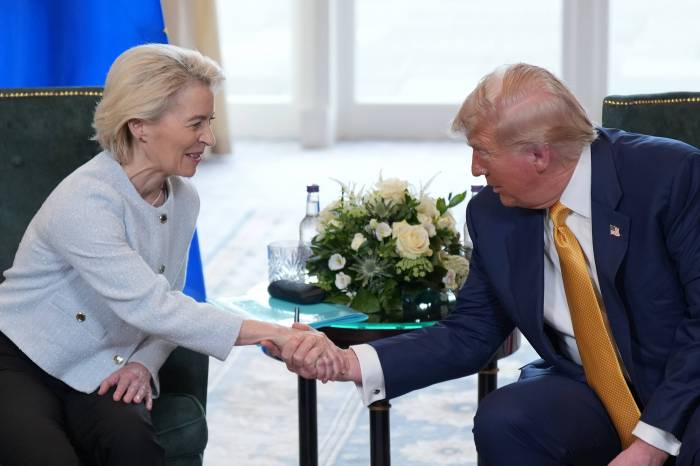European wine and spirits hit by new 15 percent US tariff after trade agreement
El acuerdo comercial excluye al sector de las exenciones y genera preocupación por el impacto en exportaciones y competitividad europea
2025-07-28

The European Union’s wine and alcoholic beverage industry is facing a major setback after the United States confirmed on Monday that these products will be included in a new 15% tariff on all EU goods entering the American market. The decision comes after days of speculation and conflicting reports about whether wine and spirits would be spared from the tariff hike, which replaces the extraordinary 30% rate announced earlier in July.
The agreement was finalized on Sunday, July 27, following negotiations between European Commission President Ursula von der Leyen and U.S. President Donald Trump. Under the terms, the EU will not only accept the 15% tariff but also commit to significant purchases from the United States. These include $750 billion worth of energy, $600 billion in investments, and an unspecified but “huge” amount of U.S. military equipment. In exchange, the U.S. agreed to cap tariffs at 15% for most EU goods, with some sectors such as aeronautics, certain chemicals, generics, semiconductor equipment, select agricultural products, natural resources, and essential raw materials exempted from any tariffs.
However, wine and alcoholic beverages were not included in these exemptions. This is a blow to major European producers, especially France, Italy, and Spain, which together account for most of the EU’s wine exports to the U.S. In 2024 alone, EU exports of alcoholic beverages to the U.S. reached €9 billion ($10.5 billion), with wine making up nearly €5 billion of that total. Spirits and liqueurs also represent a significant share. European beer and ready-to-drink beverages face an additional challenge: their aluminum packaging will be subject to a special 50% tax.
The new agreement averts an even steeper tariff threat from Washington. President Trump had warned that if Brussels did not comply by August 1, all European products would face a 30% tariff starting that date. The current deal raises tariffs from the existing 10% to 15%, but many economists and trade experts argue that Europe has conceded more than it gained. The U.S. stands to benefit not only from higher tariffs but also from massive new revenue streams through energy sales, investments, and arms deals with Europe.
Despite criticism from many quarters that the agreement is unbalanced in favor of the United States, President von der Leyen described it as a step toward stability: “Today’s agreement creates certainty in times of uncertainty,” she said on Monday.
Industry leaders are still hoping for relief. Chris Swonger, president and CEO of the Distilled Spirits Council in the U.S., expressed optimism that further negotiations could lead to zero tariffs for spirits products on both sides of the Atlantic. French Trade Minister Laurent Saint Martin also voiced hope that alcoholic beverages might eventually be exempted from U.S. tariffs.
For now, however, European wine and spirits producers must prepare for higher costs when exporting to their largest overseas market. The United States remains the top buyer of EU alcoholic beverages by value, making this new tariff a significant challenge for producers across Europe’s leading wine regions.
The situation remains fluid as both sides continue discussions over specific product exemptions within agriculture and other sectors. But as of Monday, European wine and spirits are included in the new 15% tariff regime—a development that will have immediate consequences for exporters and could reshape transatlantic trade in one of Europe’s most valuable industries.
Founded in 2007, Vinetur® is a registered trademark of VGSC S.L. with a long history in the wine industry.
VGSC, S.L. with VAT number B70255591 is a spanish company legally registered in the Commercial Register of the city of Santiago de Compostela, with registration number: Bulletin 181, Reference 356049 in Volume 13, Page 107, Section 6, Sheet 45028, Entry 2.
Email: [email protected]
Headquarters and offices located in Vilagarcia de Arousa, Spain.